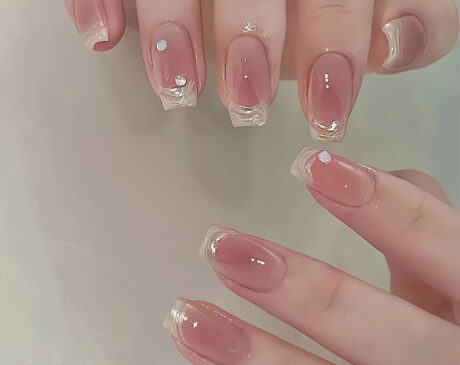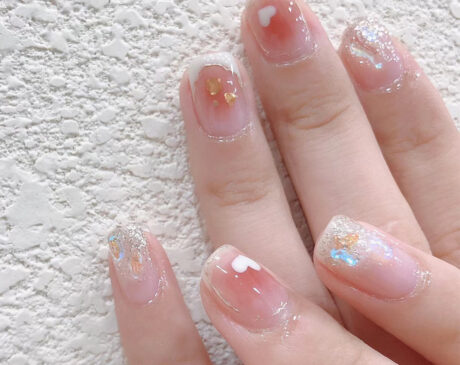Will Liquid Nails stick to anything?

Liquid Nails is a prominent name in the adhesive world, synonymous with strength and versatility. The purpose of this article is to thoroughly explore the capabilities of Liquid Nails and address the common question: do Liquid Nails stick to anything? We will delve into its chemical composition, various applications, benefits and limitations to get a full understanding of this popular adhesive.
What are liquid nails?
Ingredients and Types
Liquid Nails is more than just a product; it’s a brand that contains a range of adhesive formulas. Each variant is designed for specific materials and conditions, from heavy-duty construction adhesives to more specialized types for delicate applications. It is vital to understand the composition of these adhesives. They typically consist of either solvent-based or water-based compounds, with each type offering unique properties in terms of bond strength, drying time and usability.
General Purpose
The versatility of liquid nail polish makes it a popular choice for everything from DIY home projects to professional construction. Its applications range from securing wood framing, fixing drywall, gluing tiles to floors, and even outdoor use. Its wide range of availability stems from its ability to bond a wide range of materials, providing a long-lasting hold.
Adhesion ability of Liquid Nails
Adhesion to different materials
Liquid nails are known for their strong adhesion to a wide range of materials such as wood, concrete, stone, metal and some plastics. However, its effectiveness may vary depending on the nature of the material. For example, it bonds very well to porous materials such as wood, but may require additional preparation when working with non-porous surfaces such as metal or some plastics.
Limitations of Adhesion
Any adhesive has its limitations, and the liquid nail is no exception. It may not adhere effectively to certain surfaces such as polyethylene, polypropylene, PTFE, or silicone. Additionally, its performance can be hindered when applied to wet or excessively smooth surfaces. Understanding these limitations is critical to choosing the right adhesive for your project.
Factors affecting adhesion
Surface Preparation
The key to maximizing the adhesive strength of Liquid Nails is proper surface preparation. Surfaces should be clean, dry and free of any debris or oily substances. Light sanding can improve adhesion on smooth surfaces by creating more bonding surface area for the adhesive.
Environmental Factors
The environment plays a critical role in the application of liquid nails. Temperature and humidity levels can significantly affect adhesive performance. Optimal conditions typically include moderate temperatures and low humidity to ensure the adhesive cures properly for a strong bond.
Liquid Nails vs. other adhesives
Strength Comparison
When compared to other common adhesives such as epoxy, PVA (polyvinyl acetate), or silicone-based adhesives, Liquid Nails often stands out for its shear strength, especially when bonding large or heavy materials. It is particularly effective in applications where a durable, long-lasting bond is required.
Use case scenarios
Choosing the right adhesive is critical and depends on the specific requirements of the project. While liquid nails are ideal for heavy-duty applications, other adhesives may be more suitable for fine or temporary bonding, which highlights the importance of understanding the pros and cons of each type.
Safety and handling of liquid nails
Precautions for use
Using liquid nails requires adherence to safety guidelines. Adequate ventilation is critical as some formulas emit fumes. Protective gloves and goggles are also recommended to avoid skin and eye irritation.
Storage and Disposal
Proper storage and handling of liquid nails is as important as their application. Adhesives should be stored in a cool, dry place away from direct sunlight and heat sources. Disposal should be carried out in accordance with local environmental regulations to ensure that the remaining product does not harm the environment.
Application Technology
Application Best Practices
For effective use, liquid nail polish should be applied in a controlled manner. Apply evenly with a caulking gun, zigzag the adhesive and press the surfaces together for a specific amount of time to ensure a stronger bond.
Tips for Maximizing Adhesion
Applying appropriate pressure and allowing the adhesive to become tacky before bonding the surfaces can greatly enhance adhesion. In addition, allowing the adhesive sufficient time to cure before subjecting the bonded item to pressure or weight is critical to achieving maximum bond strength.
Drying Time and Curing Process
Factors Affecting Drying Time
Several factors can affect the drying time of liquid nails, including air temperature, humidity and the thickness of the adhesive layer. Thicker layers and cooler, more humid environments typically extend drying time.
How Curing Affects Adhesion
The curing process, which may extend beyond the initial drying time, is critical to achieving final adhesive strength. This process can take several days and is influenced by the same environmental factors that affect drying time.
Common Myths About Liquid Nail Polish
Debunking the Myths
A common misconception about liquid nail is that it creates an instant bond. While it sets relatively quickly, it takes a full curing period to achieve full bond strength, which varies depending on the product and conditions.
Realistic expectations
It is critical to have realistic expectations of how Liquid Nails will function. While it is a strong adhesive, understanding its proper use and limitations ensures optimal results and avoids disappointment.
Pros and Cons of Using Liquid Nails
Pros.
The key benefits of Liquid Nails include high bond strength, versatility for a wide range of materials, and durability, making it a top choice for both indoor and outdoor applications.
Cons.
However, the limitations of liquid nails on certain surfaces, the need for proper ventilation during use, and the requirement for precise surface preparation are some of the disadvantages to consider.
User Experiences and Reviews
Example Exploration
User experiences often highlight the practical application and reliability of Liquid Nails on a variety of projects. From home repairs to professional construction, these case studies provide real-world insights into the performance of the adhesive.
Expert Opinion
Construction and maintenance professionals often recommend Liquid Nails for its strong adhesive performance. Their expertise and experience using the product in a variety of scenarios provides valuable insight into its effectiveness and best practices.
Liquid Nails Hotel FAQs and Answers
Solving Frequently Asked Questions
This section delves into frequently asked questions about Liquid Nails, providing users with detailed answers and practical tips.
Troubleshooting Common Problems
Solving Application Problems
This section of the article will provide solutions to common problems encountered during the application of Liquid Nails, such as uneven spreading or weak adhesion.
Troubleshooting
Here, we’ll discuss tips for resolving bonding failures, including methods of surface repreparation and reapplication to ensure successful bonding.
Alternatives to Liquid Nails
Alternative Adhesive Options
This section will explore alternative adhesives such as epoxy, silicone, or PVA glue, each of which is suitable for different types of projects and materials.
When to Use Alternatives
Understanding the scenarios where alternative adhesives may be more appropriate is critical to the success of any project.
Liquid nails offer strong bonding properties, making them a versatile and reliable choice for a wide range of applications. However, in order to realize their full potential, it is important to understand their limitations and the nuances of their applications. This thorough examination of Liquid Nails is designed to equip you with the knowledge to determine if it is the right adhesive for your needs.
Unique Frequently Asked Questions
Can Liquid Nails bond plastic to metal?
Yes, Liquid Nails can bond plastic to metal, but its effectiveness depends on the type of plastic and metal and the finish involved.
How long does Liquid Nails take to cure?
For maximum bond strength, Liquid Nails should cure for at least 24 hours, with some variants taking up to a week, depending on environmental conditions and the thickness of the application.
Is Liquid Nail Polish waterproof?
Some formulations of liquid nail polish have been specifically designed to be waterproof and suitable for outdoor use. However, it is important to check the product specifications for confirmation.
Can liquid nail polish be used outdoors?
Yes, there are specific liquid nail formulas suitable for outdoor use. They are designed to withstand all weather conditions and provide a long-lasting bond.
How do I remove excess liquid nails?
Excess liquid nails can be removed with solvents such as mineral spirits. It is important to use these solvents carefully to avoid damaging the surface in question.




